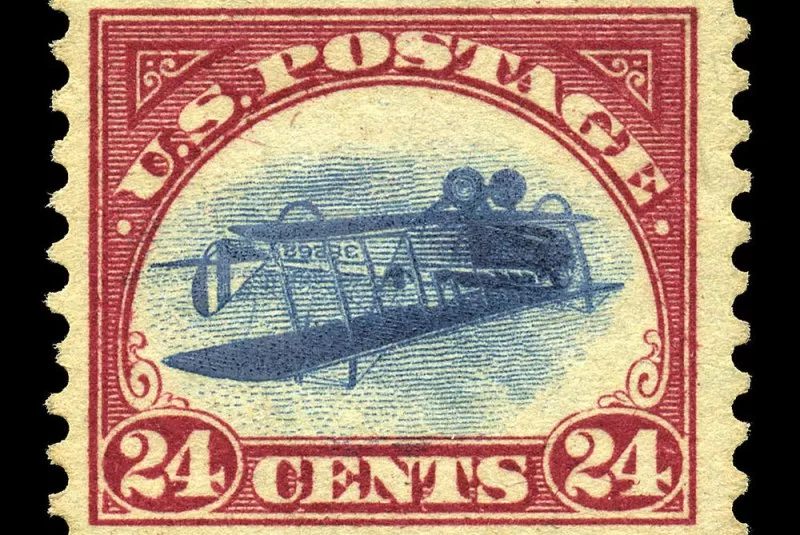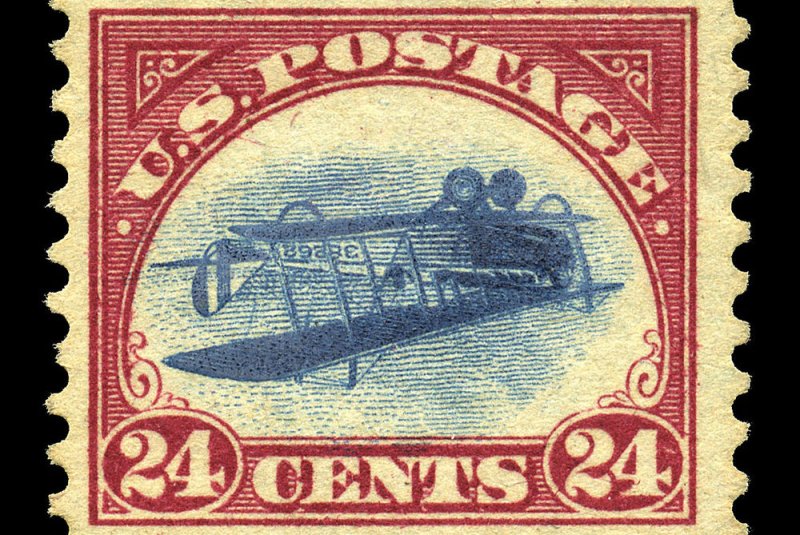The cost of a U.S. postage stamp is rising to 73 cents Sunday, but an anonymous Wall Street executive recently purchased one of the world’s most famous misprinted postage stamps, the “Inverted Jenny,” for $825,000, according to Heritage Auction Galleries of Dallas. File Photo by Heritage Auction Galleries/UPI |
License PhotoJuly 13 (UPI) — The cost to mail a letter will rise to 73 cents starting Sunday after the U.S. Postal Service announced its second price increase this year.
The cost increase includes the price of forever stamps, which the Postal Service offers at a fixed rate for mailing letters and other items.
The current price of 68 cents for a first-class postage stamp and forever stamps reflects a 5 cent price increase made on July 9, 2023, after the Postal Service raised the price by 3 cents on Jan. 22, 2023.
The two price increases this year marks the third straight year the Post Office twice raised the cost of stamps during the same year.
When the Postal Service introduced forever stamps in 2007, the initial cost was 41 cents per stamp.
Most people don’t use the Postal Service much anymore due to the proliferation of electronic communications and online billing and payment systems.
Instead, businesses account for most of the Postal Service’s annual $40.8 billion in mail revenues.
“As changes in the mailing and shipping marketplace continue, these price adjustments are needed to achieve the financial stability sought by the organization’s Delivering for America 10-year plan,” USPS said in an April 9 news release. “USPS prices remain among the most affordable in the world.
With first-class postage stamps rising to 73 cents, the cost of mailing letters, bulk mailings, junk mail and periodicals also is rising.
The higher the cost for businesses to use the Postal Service, the more they cut back on their mailings or seek alternatives, such as FedEx and UPS, to send packages and bulk mailings to consumers.
“We think they’ve overshot the mark on raising their rates,” Michael Plunkett, CEO of the Association for Postal Commerce, told CNN Business.
“These rate increases aren’t generating much additional revenue because it’s driving volume out of the system that is likely never to return,” Plunkett added.
The resulting cutbacks in Post Office use by businesses make it harder for the Postal Service to sustain its business model.
The cost of postage stamps used to be based on inflation, but recent postage stamp price increases have outpaced inflation by 10 points.
The cost of a first-class postage stamp 50 years ago was 10 cents and was only 34 cents in 2002.
The Postal Service has more than 30,000 facilities employing about 640,000 throughout the United States.
The volume of mail and packages delivered by the Postal Service has declined, though.
The Postal Service delivered 11.4 billion letters last year, which is 75% less than two decades ago.
Online commerce has increased the number of packages delivered by the Postal Service during that same time-frame, but competition is growing with private carriers.

